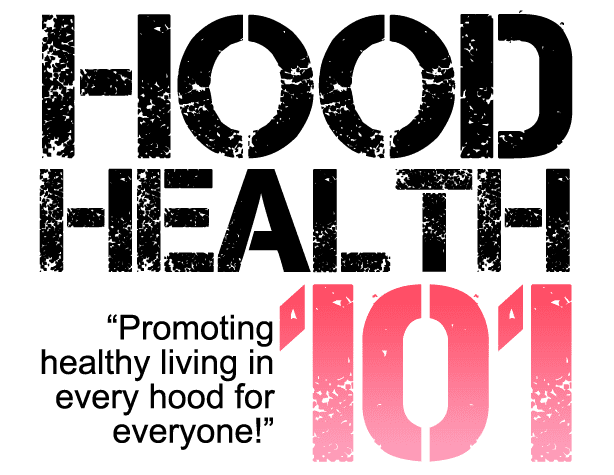This edition of Hood Health 101 recognizes National Diabetes Awareness Month.
Diabetes is a widespread problem that 29.1 million Americans have, and of them 8.1 million of those individuals remain undiagnosed according to the Center for Disease Control. From the astronomical amount of individuals facing this problem, we know that there are changes that NEED to be made within the S.A.D. (Standard American Diet) and within other aspects of our lifestyles in general. It is equally if not more important to note that diabetes affects Black and Brown People at vastly disproportionate rates. The American Diabetes Association has an article that addresses the impact of the disparities with regard to diabetes within racial minority groups. Listed below is the information that their article presented on the percentage of higher rates at which ethnic minorities develop diabetes verses their Caucasian counterparts.
- African Americans have a 77% higher risk of getting diabetes
- Latinos Americans have a 66% higher risk of getting diabetes
- American Indians and Alaska Natives in 2004 had diabetes related death rates that were 3 times higher than the general U.S. population. This particular ethnic group also has the highest age adjusted incidences of diabetes among U.S. racial and ethnic groups.
Within that article the ADA also referenced the Institute of Medicine Report entitled “Unequal Treatment: Confronting Racial and Ethnic Disparities in Health Care,” which offered evidence that racial minorities were in fact treated differently from Caucasians within the health care system in the United States. The report specifically notes that African Americans, Latinos, and Native Americans shoulder a 50% – 100% higher liability of sickness and death from diabetes than Caucasian Americans.
There are Type 1 and Type 2 diabetes. Type 1 Diabetes occurs when the body doesn’t make enough insulin and Type 2 Diabetes occurs when the body cannot use insulin properly. Insulin is a hormone in the body that’s needed to convert sugar, starches and other food into energy. Some factors that contribute to diabetes are obesity, family history, and gestational diabetes. Below are some symptoms of both Type 1 and Type 2 diabetes:
- Urinating often
- Excessive thirst
- Feeling very hungry – even though you are eating
- Extreme fatigue
- Blurry vision
- Cuts/bruises that are slow to heal
- Weight loss – even though you are eating more (type 1)
- Tingling, pain, or numbness in the hands/feet (type 2)
To assist with the prevention of diabetes you should maintain a healthy weight, eat a healthy diet, and increase your physical exercise routine or simply be more active. As always you should consult your health care professional for testing to determine if you have diabetes. I know that I always say this however, this article was not intended to give you all of the information about diabetes. The intent was to illustrate the need to recognize and bring further attention to this epidemic, especially for Black and Brown people. Don’t forget to follow me on Twitter @NakeashaJ and on Instagram @Melanated_Beauty.
